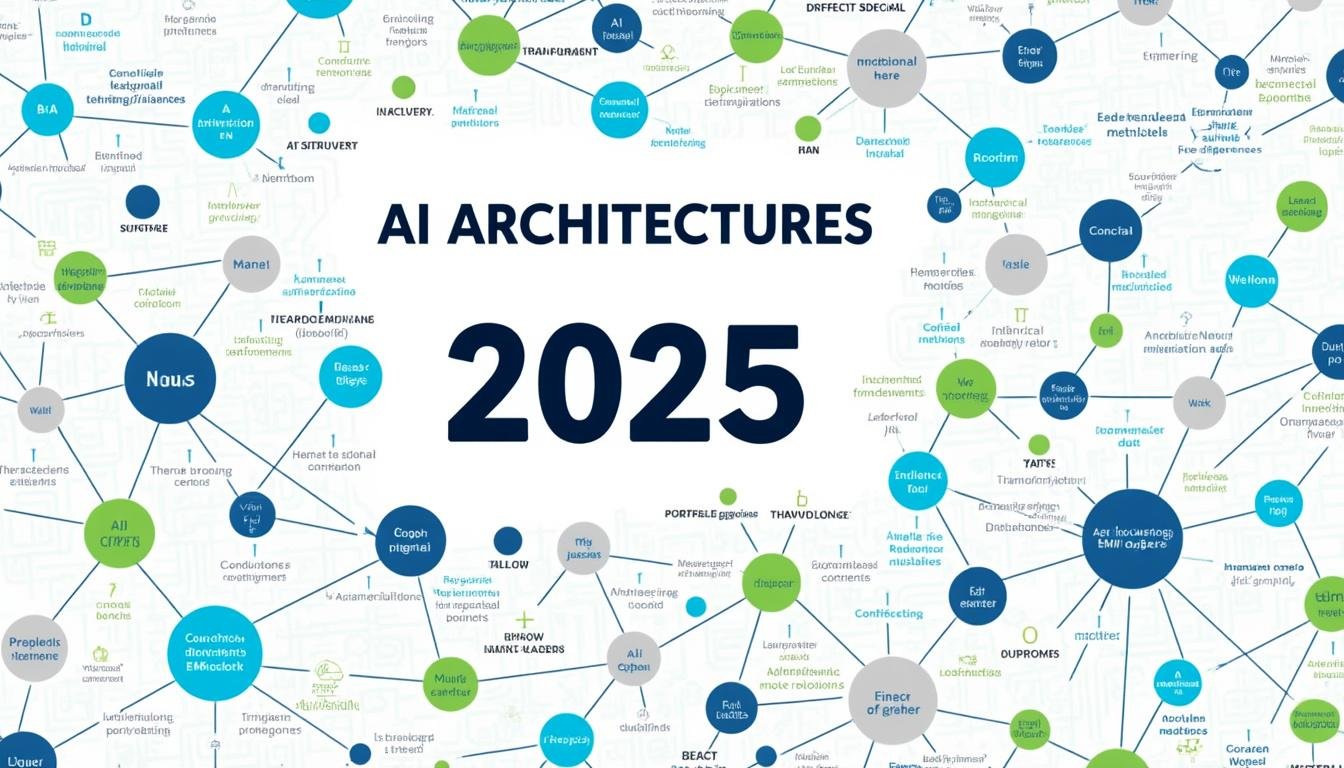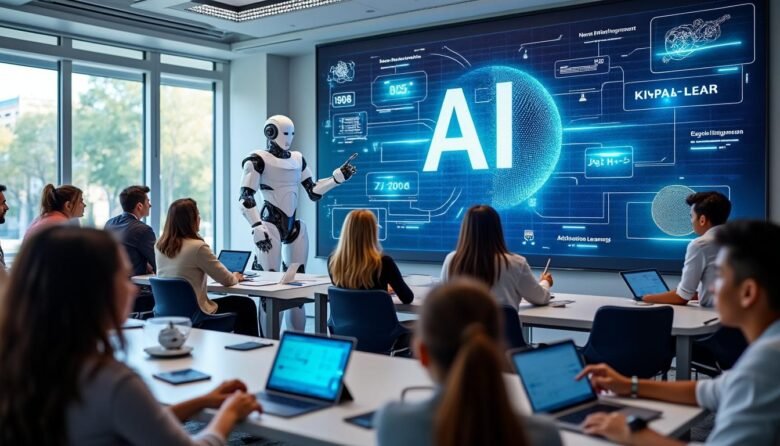In a fast-moving landscape where machines increasingly augment human decision-making, understanding key concepts in artificial intelligence is no longer optional. This comprehensive guide dives deep into foundational ideas, practical architectures, real-world deployments, ethical considerations, and the evolving terminology that shapes AI practice in 2025. Readers will move beyond buzzwords toward a structured map of terms, models, and deployment patterns, anchored by notable platforms and industry leaders such as OpenAI, DeepMind, IBM Watson, Microsoft Azure AI, Amazon Web Services AI, Google AI, NVIDIA, Baidu AI, Salesforce Einstein, and Intel AI. Each section builds a cohesive understanding with concrete examples, case studies, and actionable resources, helping engineers, managers, and researchers translate theory into impact.
- Foundational concepts and terminology are explained with real-world context and examples.
- Key algorithms, models, and architectures are mapped to practical deployments across industries.
- Ethical and governance considerations are integrated with risk management and responsible AI practices.
- Curated resources and references provide pathways to deepen knowledge and stay current in 2025.
Understanding Key Concepts in Artificial Intelligence: Foundations, Terms, and Core Distinctions
Understanding the foundations of artificial intelligence requires clarity about what counts as AI, how it differs from related terms, and why definitions matter in practice. This section unpacks the evolution from symbolic reasoning to data-driven learning, clarifying the roles of Artificial Intelligence, Machine Learning, Deep Learning, and Neural Networks. It also introduces Reinforcement Learning and generative models, which have become central to contemporary AI applications. The objective is not merely to memorize terms, but to understand how each concept translates into capabilities, limitations, and deployment considerations in 2025.
The modern AI stack rests on a conceptual ladder. At the base, symbolic AI represented human-crafted rules and logic. The next layer, Machine Learning, shifts emphasis from hand-coded rules to data-driven inference. Deep Learning takes this a step further by stacking multi-layer neural networks that automatically learn abstract representations from raw data. Within this framework, Neural Networks serve as the computational substrate, enabling breakthroughs in perception, language, and control. The pinnacle of current AI systems often involves Transformer architectures and attention mechanisms that excel at sequence modeling, enabling advances in NLP, computer vision, and multimodal tasks. Finally, Reinforcement Learning introduces agents that learn optimal behavior through trial-and-error interaction with their environment, a paradigm that underpins robotics, game playing, and autonomous decision-making.
To operationalize these ideas, it helps to anchor terms with concrete examples and responsible usage guidelines. Consider a healthcare startup leveraging IBM Watson or Microsoft Azure AI to process patient records, extract insights, and support clinicians. In this setting, supervised learning techniques may classify imaging data, while reinforcement learning could optimize clinical pathways in simulation environments. In manufacturing, NVIDIA GPUs accelerate deep learning workloads for defect detection, predictive maintenance, and supply chain optimization. Meanwhile, open platforms from Google AI and OpenAI demonstrate capabilities in language understanding, code generation, and generative design. For a broader glossary, explore resources linked to AI terminology and key concepts in the external references listed in this article, which provide layered definitions and cross-references across terms.
Table 1 provides a compact reference to common terms and their roles. The table is designed as a quick diagnostic tool to orient teams, map project requirements to appropriate methods, and identify potential pitfalls in model selection and deployment.
| Term | Definition | Typical applications | Notes |
|---|---|---|---|
| Artificial Intelligence (AI) | Systems designed to emulate facets of human intelligence, including learning, reasoning, and perception. | Decision support, automation, perception tasks, natural language processing | Broad umbrella term; encompasses many methodologies. |
| Machine Learning (ML) | Algorithms that infer patterns from data without explicit programming for every scenario. | Classification, regression, clustering, anomaly detection | Data quality and model evaluation are critical success factors. |
| Deep Learning (DL) | Subfield of ML using multi-layer neural networks to learn hierarchical representations. | Computer vision, NLP, speech, multimodal tasks | Computationally intensive; often requires specialized hardware. |
| Neural Network | Computational graphs that simulate neuron-like units and their connections. | All DL architectures; feedforward, CNN, RNN, Transformer | Architecture choice shapes learning dynamics and performance. |
| Reinforcement Learning (RL) | Agents learn policies through interactions with an environment and feedback signals. | Robotics, game playing, autonomous control | Sample efficiency and safety considerations are central challenges. |
For readers seeking more depth, the glossary sections linked below provide extended definitions, visual graphs, and cross-links to related terms. Practical glossaries help bridge academic concepts with industry usage and platform-specific implementations. A curated set of references includes articles and glossaries with multiple entry points to terms, concepts, and deployment considerations.
Relevant resources and platforms to observe evolving terminology include AI terminology: comprehensive guide, glossary of key terms (part 3), guide to AI language, decoding AI terminology, and other curated resources listed below. These references provide structured ladders from basic terms to advanced concepts, including transformer architectures, attention mechanisms, and variational autoencoders, all of which are central to contemporary AI practice in 2025.
Key terms and platform-specific implementations are often described in relation to industry players. For instance, OpenAI popularized transformer-based language models, while DeepMind has pushed forward reinforcement learning and policy optimization research. IBM Watson, Microsoft Azure AI, and Amazon Web Services AI provide enterprise-grade AI services and tooling. In computer vision and inference acceleration, NVIDIA and Google AI lead with hardware-optimized software stacks, whereas Baidu AI and Intel AI push AI at the edge and in data centers. These platforms collectively illustrate how terminology translates into accessible, scalable solutions across sectors.
Core Algorithms and Architectures: Learning Paradigms, Models, and Evaluation
The landscape of AI is sculpted by learning paradigms, architectural choices, and rigorous evaluation practices. This section explores supervised, unsupervised, semi-supervised, and reinforcement learning, along with key neural architectures such as Convolutional Neural Networks (CNNs), Recurrent Neural Networks (RNNs), and Transformer-based models. A practical view is offered on when to choose a given paradigm, how to structure data, and what metrics count in real-world deployments. The aim is to translate theoretical concepts into decision criteria for project scoping, data collection, model selection, and lifecycle management in 2025.
Learning paradigms: supervised, unsupervised, reinforcement
Supervised learning relies on labeled data to map inputs to outputs. It shines in structured tasks like image classification, named entity recognition, and regression for forecasting. Unsupervised learning uncovers latent structure without explicit labels, enabling clustering, dimensionality reduction, and anomaly detection in exploratory data analysis. Semi-supervised learning offers a middle ground when labeled data are scarce but unlabeled data are abundant, often leveraging pseudo-labeling or consistency training. Reinforcement learning focuses on agents that learn optimal decisions through trial-and-error interactions with an environment, balancing exploration and exploitation to maximize cumulative reward. In production, these paradigms are chosen based on data availability, task nature, and safety constraints; hybrid approaches often yield robust solutions in complex domains such as robotics and autonomous systems.
Architectures powering AI: Transformers, CNNs, RNNs
CNNs excel at spatially structured data like images, capturing local patterns through convolutional filters and hierarchical feature extraction. RNNs and their gated variants (LSTMs, GRUs) model sequences where temporal dependencies matter, such as text or time-series data. The transformer architecture revolutionized AI by employing self-attention to model long-range dependencies without recurrent processing, enabling parallelization and scalability for language, vision, and multimodal tasks. Transformer variants including encoder-decoder and decoder-only designs power systems for translation, code generation, and content creation. In audio, video, and sensor data, attention-based models are increasingly combined with convolutional backbones or diffusion-based components to address domain-specific challenges. The result is a spectrum of models that can be tailored to latency, accuracy, and resource constraints in production environments.
Evaluation metrics and best practices
Model evaluation rests on well-chosen metrics aligned with business goals. Classification and regression tasks use accuracy, precision, recall, F1 score, ROC-AUC, MSE, MAE, and related measures. In ranking, precision@k and mean reciprocal rank provide insight into ordering quality. For generative systems, metrics like BLEU, ROUGE, or more robust perceptual scores capture quality, while human-in-the-loop assessments remain essential for subjective tasks. Beyond metrics, best practices include robust data governance, leakage prevention, cross-validation with stratification, and careful monitoring of model drift over time. Safety checks, bias analyses, and interpretability tools support trust and accountability when models affect real people and processes. Industry leaders and platform providers continue to publish governance templates, risk dashboards, and deployment blueprints that help teams scale responsibly.
| Category | Key Concepts | Representative Techniques | Industry Examples |
|---|---|---|---|
| Supervised Learning | Learning from labeled data to map inputs to outputs | Logistic regression, SVM, Random Forest, Gradient Boosting, DNNs | Medical image classification, fraud detection, demand forecasting |
| Unsupervised Learning | Discovering hidden structure without labels | k-Means, DBSCAN, PCA, t-SNE, Autoencoders | Customer segmentation, anomaly detection, data compression |
| Reinforcement Learning | Policy learning via interaction and reward signals | Q-learning, Deep Q-Networks, Policy Gradient, Actor-Critic | Robotics control, game playing, autonomous navigation |
| Transformers | Self-attention for sequence modeling and parallel processing | Encoder-only (BERT), Decoder-only (GPT), Encoder-Decoder (T5) | Language translation, text generation, multimodal tasks |
In practice, teams often combine these paradigms to tackle end-to-end problems. For example, a financial services firm may use supervised learning for credit scoring, unsupervised clustering for customer segmentation, and RL-based optimization for dynamic portfolio rebalancing. The ability to mix paradigms depends on data availability, performance goals, and governance constraints. Platforms from Google AI and Microsoft Azure AI provide integrated toolchains that streamline experimentation, deployment, and monitoring, while hardware accelerators from NVIDIA support the computational demands of large transformer models. A second video below deepens the exploration of transformer architectures and practical deployment patterns, highlighting trade-offs in latency, accuracy, and resource usage.
To complement theory with a visual map of architectures, a dedicated image illustrating the AI architecture landscape in 2025 can help teams plan for scale. The image below captures how CNNs, RNNs, and transformers co-exist, with diffusion processes and multimodal models shaping next-generation systems. This visualization serves as a quick reference during planning sessions and architecture reviews.





